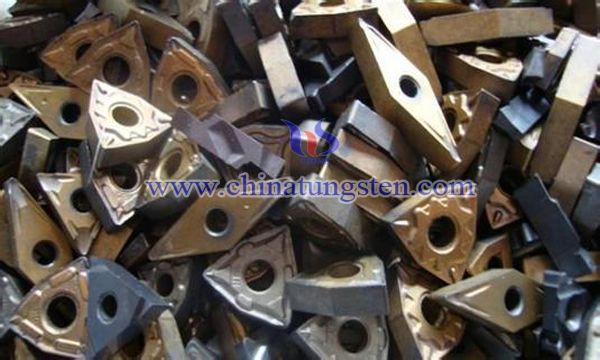Remove Chromium from Waste Containing Tungsten
- Details
- Category: Tungsten Information
- Published on Sunday, 22 April 2018 18:15
At present, the domestic and international methods for the treatment of tungsten-containing wastes include mechanical crushing, electrolysis, alkali leaching, sodium roasting, and zinc smelting. Among these, the sodium sinter roasting process technology is relatively mature, and its applicability to waste tungsten materials more extensive, it is generally used to recover carbide grinding materials and tungsten in various slag.

After the waste tungsten material is calcined by sodium, the chromium therein will be oxidized and enter the tungstate sodium solution in the form of ions when immersed in water. If it is not removed, the chromium in the tungsten product will exceed the standard. Therefore, in order to obtain a high-quality tungsten product, it is necessary to remove the chromium in the sodium tungstate solution.
(1) Under acidic conditions, using ferrous sulfate, sodium sulfite, etc. as a reducing agent, the Cr6+ in the solution is reduced to Cr3+, and then alkali is added to make chromium hydroxide be precipitated and removed, but this method needs to first adjust the sodium tungstate solution to acidity, after the end of reduction, it is necessary to add alkali and chromium. This will not only consume a large amount of acid and alkali, increase the treatment process, but also increase the sulfate ion in the solution, while the increase of sulfate ion will affect the subsequent sodium tungstate. The conversion of solution to ammonium tungstate solution has a serious effect.
(2) Adding enough sodium hydrosulfide or potassium hydrosulfide and other reagents to the sodium tungstate solution once to reduce the Cr6+ in the solution to Cr3+ and precipitate it for removal, but the amount of auxiliary materials of this method is too large, and the final processing cost is high. In practical production, it does not have the significance of large-scale production.
Some scholars have proposed an improved method for the recovery of chromium from scrap containing tungsten. The method is simple and effective. The steps are as follows:
1)Sodium sulfide precipitant is added to the crude tungsten tungstate solution at a temperature of 60 to 100°C, mixed and filtered, and the filtrate is taken.
2)The filtrate is diluted and adsorbed with anion exchange resin.
3)Analytical treatment of the treated ion exchange column with an analytical agent to obtain an ammonium tungstate solution.
4)A vulcanizing agent is added to the ammonium tungstate solution for vulcanization and filtration.
This method can achieve deep chromium removal, and the removal rate of chromium is as high as 99% and above. At the same time, the chromium removal process is combined with subsequent removal of other impurities such as molybdenum, which greatly reduces the processing cost.
- Tungsten Manufacturer & Supplier, Chinatungsten Online: www.chinatungsten.com
- Tungsten News & Prices of China Tungsten Industry Association: www.ctia.com.cn
- Molybdenum News & Price: news.molybdenum.com.cn
- Tel.: 86 592 5129696; Fax: 86 592 5129797; Email: sales@chinatungsten.com



 sales@chinatungsten.com
sales@chinatungsten.com